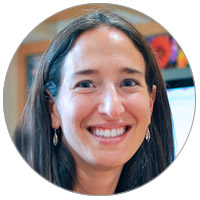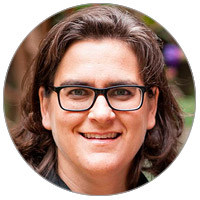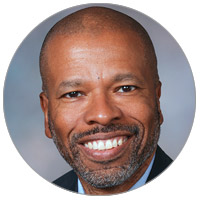Health Equity | Population Health
News
Food Prescription Programs: Future Potential and Current Obstacles
Penn LDI Seminar Convenes a Panel of Top Food-as-Medicine Experts
While the idea of clinicians writing food prescriptions for undernourished patients is not new, it has increased traction as the need to address the social determinants of health has become a national imperative. And it’s not difficult to understand why.
The latest U.S. Department of Agriculture Economic Research Service food insecurity statistics were issued just before the pandemic hit. Even then, the numbers were staggering. Some 35.2 million people—5.3 million of whom are children—were living in food-insecure households. This statistic has since risen as a result of the economic devastation and social disruption wreaked by COVID-19, particularly in low-income, vulnerable populations.
Undernourished patients
A large, but not precisely quantified, sub-population of these adults and children aren’t just hungry. They have health conditions caused or exacerbated by insufficient intake of certain kinds of foods, like fresh vegetables and fruits. Over the last decade, a growing number of food-as-medicine programs—some associated with large health systems and others with local non-profit community groups—have been operating to meet those needs.
A review in the Journal of Nutrition a year ago found the most common model of food-as-medicine services provides vouchers to patients to fill prescriptions for fresh fruit, vegetables, and other foods at neighborhood corner stores, supermarkets, community gardens, food pantries, farmers’ markets, and other food distribution venues.
This growing trend of clinically viewing nutrition as a crucial vital sign was the subject of an April 23 University of Pennsylvania seminar co-sponsored by the Leonard Davis Institute of Health Economics (LDI) and the Center for Health Incentives and Behavioral Economics (CHIBE).

Titled “A Nourishing Prescription: Food as Medicine to Promote Health and Health Equity,” the panel included Sarah Downer, JD, Associate Director of Harvard Law School’s Center for Health Law and Policy Innovation and Co-Director of that Center’s Whole Person Care Initiative, which focuses on nutrition in underserved communities; Benjamin Perkins, MA, MDiv, CEO of the non-profit Wholesome Wave that backs physicians’ food prescriptions with vouchers redeemable at local stores; Hilary Seligman, MD, MAS, University of California San Francisco Professor and Founder of EatSF, a healthy-foods voucher program for low-income residents; and panel moderator Christina Roberto, PhD, LDI Senior Fellow, Associate Director of CHIBE, and Director of the Perelman School of Medicine’s Psychology of Eating and Consumer Health (PEACH) Lab.
Actual numbers unknown
Two challenges to making the policy case for more public funding of such programs are the decentralized nature of the current programs and a lack of credible estimates of the number of patients across the country who either currently receive or need foodRx nutritional support.

“Unfortunately, those numbers don’t exist,” said Downer, who authored the Massachusetts Food is Medicine State Plan. “We don’t have a great way to estimate how many people with various diet-affected conditions are food insecure or who have limitations in activities of daily living, which is also a big predictive factor for needing these services. Because the programs serving people are largely grant-funded and localized, we also don’t have a good way to estimate just how many people are receiving these interventions.”
“The data,” Downer continued, “is dispersed across a wide array of programs, health plans, health centers, etc.—and no entity is charged with pulling it together. This is one of the reasons we hope the Centers for Medicare and Medicaid Services (CMS) will mount a demonstration to evaluate use of these services within our public insurance programs. Without an initiative like this, we will continue to lose opportunities to leverage best practices or double down on what’s working well.”
Moderator Roberto emphasized that food-as-medicine programs are not the same as the federal Supplemental Nutrition Assistance Program (SNAP) (formerly Food Stamps), or the Special Supplemental Nutrition Program for Women, Infants, and Children (WIC) programs.

Filling local nutrition gaps
“We’ve learned that SNAP and WIC are incredibly important federal nutrition programs, but there are gaps in them,” said panelist Seligman, whose EatSF “Vouchers4Veggies ” program works with 30 local vendors to fill food prescriptions. “It’s really important that local municipalities, states and regions have the capacity to fill those gaps. Vouchers, medically tailored meal programs, and food pharmacies have a lot of flexibility to fill the gaps.”
Panelist Perkins pointed out that “nutritional insecurity or security do not exist in a vacuum. Many communities are situated in environments that are the result of the policies and practices of structural racism that have made it difficult to access affordable, nutritious food. Discrimination in housing, education, and employment are part and parcel of how we get to the downstream impact of nutrition insecurity.”
Current access and funding sources for prescription foods services is a hodgepodge of sorts, the panelists said. People can access some level of the service in some states but not in others. Medicaid has some access. Some forms of Medicare have access while other forms of Medicare don’t. People with certain health conditions can get it, but other people with different health conditions in the same location cannot.
Public insurance funding
“These kinds of things are exacerbating some inequities,” said Downer. “In the policy space, we really need to address that and make sure that especially our public insurance programs are able to provide these services. And we also really need our clinician associations to be demanding this because they can really make a huge difference. All the major medical associations, the nursing associations, and the medical social worker associations should be demanding that they be able to refer people to these kinds of services.”
The panel consensus was that the health system in general has gotten very good at screening patients for food insecurity. Providers in hospitals, clinics, and emergency departments are able to quickly identify patients that need various kinds of social supports, including food.
“The problem is,” said Seligman, “after identifying a patient with that need, we’re very poor at helping them find the right support. The reason is that we send them back out into a community system that is complicated, has limited hours of operation and is often rooted in practices that are stigmatizing. There are large numbers of papers documenting the ways SNAP and WIC are stigmatizing to the people who use them. We really need to start from the ground up in designing food-as-medicine programs that don’t do that.”

Fidelity, Equity, Dignity
“At Wholesome Wave, we use the FED principle,” said Perkins. “That acronym stands for the Fidelity, Equity, and Dignity our programs are based on. It’s more than meeting the community where they’re at. It’s about listening to that community and using their input to inform the way programs are designed and operated. And it’s not just about giving them any kind of food, but rather providing them with food that is as meaningful and culturally appropriate as it is nutritious.”
Downer pointed out that the opportunity for such programs in large-scale health systems is limited by the way the current health system is designed. “We don’t really think about addressing the needs like food and housing and all the things that are really driving the disparities we see in the clinical setting,” she said. “Our system was never set up to address those things, and health care systems are still very uncomfortable, by and large, with the idea that they should.”
Seligman noted that “in general, insurers and payers are really good about adopting benefits that have a short-term return on investment. It’s been quite straightforward to take the frailest, oldest, most medically-complex population of patients and show that these food interventions make a difference. What’s more challenging is generating long-term funding from an insurer or a payer when the return on investment takes years, or even decades. The further upstream we move, the more challenging it is to make this case.”
Beginning in childhood
“What we lose in that model,” Seligman continued, “is the really critical importance of intervening before people develop chronic disease—and even in childhood. We are never going to have really robust data indicating that a specific intervention prevents the development of things like diabetes or cardiovascular disease 50 years later. And yet that is the time we need to intervene with children in order to make sure they develop a palate for, and develop habits around, eating healthy foods. And so one of the challenges in the whole food-as-medicine movement is to be able to move these interventions towards prevention where the return on investment is not going to be seen for a long, long time, and that makes the financial issues really complicated.
An audience question asked the panel about the best practices for screening patients for food insecurity and getting them connected to an appropriate service.
Avoiding stigmatizing language
“The clinical screening tool that’s most widely used now is called The Hunger Vital Sign,” said Seligman. “It’s a two-item question that asks if people are worried about money running out or food running out. In an effort to avoid stigma, clinical providers should say something like ‘I ask all my patients about access to food because it’s a really important part of staying healthy. Many community food resources are free and we can help you find them if you need to.’ That approach destigmatizes the questions. It communicates that we can help and are not calling them out to blame them for not having access to things they need to stay healthy, or—the worst scenario—to identify households where children are neglected. A common fear among parents is that if they reveal there isn’t enough food at home, their children will be taken away because of neglect. That is a very real fear and is why questions must be asked in a very careful way.”
Another point of the discussion was that the mechanics of vouchers for food can be trickier than is apparent. Vouchers need to be redeemable in a broad number of places and take a number of different forms. Smartphone apps or gift cards have been used, but neither works for everyone. Many people don’t have access to technology or are not adept at using it. Others simply prefer to have a piece of paper in their hand so they can “see” and “feel” the benefit in a traditionally comfortable way.
As the event ended, moderator Roberto asked each of the panelists what recommendation they would make if they were sitting down with the Biden administration.
Stop this kind of research
Seligman: “We need to stop demanding more research to prove that something that improves dietary intake and food security has a downstream impact on health. This was proven decades ago; we need to agree as a community that healthy dietary intake and food security is good for you. And so the real question is how do we support better dietary intake and improve food security and take it on faith that once we do that, health outcomes are going to be better?”
Perkins: “I would encourage the administration to double down on the framing of the problem as structural racism. Doubling down on that is so critical because ultimately everything flows from there. If we design interventions that take that seriously, then downstream, we can achieve a kind of virtuous cycle as opposed to the vicious cycle we’re very much aware of.”
Downer: “I would try to convince the administration to establish a national food strategy. Right now, we have nutrition policy spread across so many agencies that don’t really work together. There’s a ton of money in that disjointed nutrition space that is creating a lot of the inequities we see and perpetuating the structural racism of those institutions. We need to really put the food and equity lens on that to better understand how we can support equitable access to nutritious food across the country in a more effective way.”